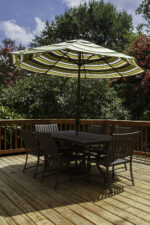Growing an Indoor Herb Garden 101
There are a few staple herbs that you can grow at home to make a big impact on your culinary creations. Even though growing herbs can be tricky, don’t let that deter you from enjoying their freshness in your everyday meals. With just a little TLC, your indoor herb garden will be thriving within just a few weeks.

Herb gardens grow well indoors, and are best kept close to your kitchen window sill so that harvesting them is convenient while you’re cooking. Here are more tips for growing your own basic indoor herb garden.

Parsley
Plant parsley in a deep pot, so it has room for its long roots to grow. This plant will thrive in a well-lit area, so set it near a window where it will get at least six hours of sun per day. Keep the soil moist, and harvest by cutting stems at the base, leaving at least two inches of the stem so it will continue growing.

Basil
Basil is a great herb for beginners because it is easy to grow and fairly hearty. If the leaves begin to wilt, this means it needs more water. Basil grows best in moist, quality soil that has proper drainage. This plant needs six to eight hours of sun, and will grow well when planted near parsley. Harvest basil leaves by snipping the stem just below the point where two large leaves meet.

Cilantro
Even though it is a staple in Mexican dishes, cilantro does not grow well in hot temperatures. Cilantro will thrive with full sun in the early morning or afternoon, but keep it shaded during the hottest part of the day. To keep this plant growing tall without getting too unruly, make sure to give it regular trimmings, as cilantro will drop seeds and continue to sprout new plants as it grows. Cut the leafy stems near ground level to harvest, but no more than one-third of the plant at once.

Additional growing tips
- Herbs love water, but they don’t love to swim in it. Make sure your pots offer sufficient drainage and that you water your herbs in small amounts regularly, typically only when the soil is dry. Choose a pot that has a drainage hole in the bottom, or create your own by drilling a hole in the bottom of a plastic planter. Use the planter with a small saucer to catch excess water. A good rule of thumb is to water your plants in the morning until you notice water slowly coming through the drainage hole. Don’t water at night to avoid fungal growth.
- Although the flowers are technically edible, they are generally a bad sign for herbs because the plant will use its energy to grow the flowers instead of leaves. If you see a flower blooming, simply pinch it off, and then trim the plant to keep it from getting top-heavy. Different herbs require different levels of pruning—basil requires a lot; parsley requires very little—so do your research for each specific plant.
- The soil you use can quickly deplete all of its nutrients and will need to be replenished. To negate this, feed your herbs with organic fertilizer or homemade plant food.
- Different herbs need different amounts of light, but consider moving your garden to a spot in your home that gets about four to six hours of sunlight per day. In some cases, supplemental lighting may be necessary.
- If you’re interested in growing your own indoor herb garden, start by doing your research. Pick herbs that you enjoy cooking with or herbs that will thrive in your home environment. You may have some trial and error, but with some consistency you’ll be harvesting your herbs in no time.
- Growing your own herbs is an extremely rewarding—and flavorful—labor of love. Get started today and, before you know it, you’ll be sharing your herbs with friends and family, or adding them as a fresh ingredient to meals!


















